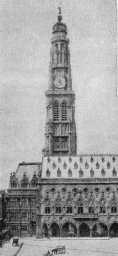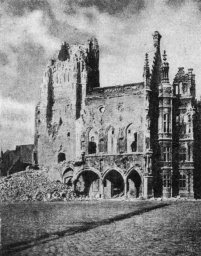
WWII: Maginot Line | Normandy | V-Weapon Sites | Arnhem
Further afield: Crete
| Home Tracing Military Ancestors Travel Advice CWGC Cemeteries Iron Harvest News Book Reviews Glossary Links Contact Me Artois:
 
|
The First Battle of Artois (October 1914)Following the defeat of the German advance into France at the Battle of the Marne in September 1914, their General Staff ordered a withdrawal to more easily defensible positions north of the River Aisne. It was clear to the Germans that their plan to take Paris in one great swoop had failed. It was equally patent to the French and British, as attacks to dislodge the Germans in late September broke down, that each side would need to find an open flank if a war of movement was to be resumed. In what became known as “The Race to the Sea”, both sides began to move troops northward to do just that. As with Ypres further to the north, the French got to Arras first although, not soon enough or in enough strength to occupy the high ground to the north-east of the city. The first determined German attacks came from the south-east on 1st October but were checked by General Barbot’s 77th Alpine Division outside Monchy-le-Preux. Further German attacks between 2nd and 4th October directed towards Arras’ eastern suburbs made some headway but the Alpine Division, now reinforced by elements of General de Maud’huy’s X Corps, continued its stubborn resistance and the focus of the German attacks moved northwards to the high ground of Vimy and Notre-Dame de Lorette. On 4th October the Germans captured Lens and on the 5th two major German attacks drove in from the north-east taking the villages of Souchez, Vimy and Neauville-St-Vaast, threatening to cross the river Scarpe and take Arras. The situation seemed critical and the French considered evacuating the city. However, desperate defence by the Alpine Division (now reduced to about a quarter of its full strength) to the east of Arras and counter-attacks by General Fayolle’s 70th Division towards Roclincourt averted the crisis. Unable to make further progress, the Germans brought up their siege artillery and on 21st October began a heavy and sustained bombardment of the town with 8" and 11" guns. On the 22nd, amidst the shelling, they attacked the north-eastern suburb of St. Laurent-Blangy in a bid to sweep aside the hard-pressed French defenders and take the city. Miraculously, the Chasseurs of the Alpine Division, reinforced by six battalions of Senegalese troops, again fought the German attack to a standstill. Without the breakthrough they needed German attention moved northwards to Ypres. Arras had been saved but at a terrible cost. The city lay in ruins and the French had suffered 125,000 casualties. Even worse the Germans now held the high ground of Notre-Dame de Lorette, Vimy and Monchy-le-Preux Hill. As the war moved into its first winter, they began to dig in. |

